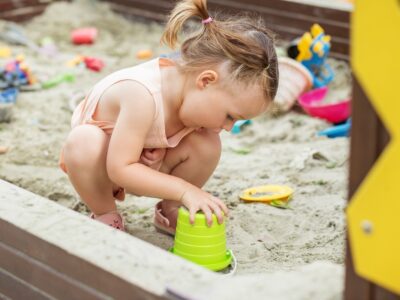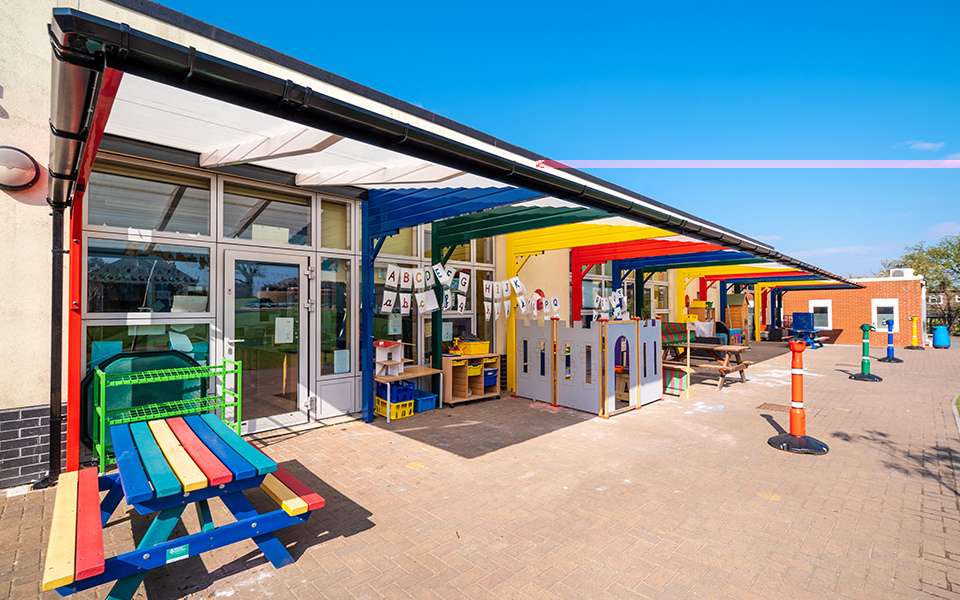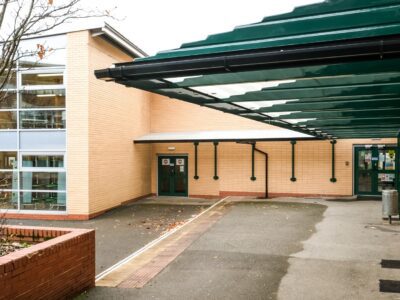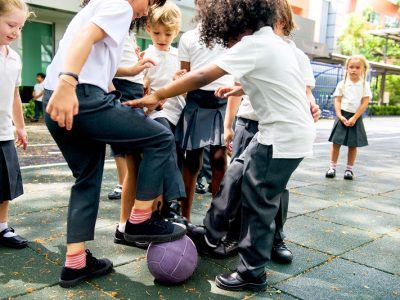How schools can design inclusive outdoor spaces
Posted on | Posted in Education
Outdoor learning is an important part of child development, encouraging teamwork, communication, curiosity, and exploration. Outdoor lessons help to broaden young people’s horizons as they work together and explore the world around them.
Time spent learning outdoors aids concentration and helps children stay active. Outdoor lessons support children who struggle with sitting quietly for long periods, with the outdoors enabling them to express themselves and enjoy a more hands-on and creative approach to learning.
What does Ofsted say about outdoor learning?
The Early Years Inspection Handbook (Ofsted, 2022) states that children should have the opportunity to get outdoors and take part in active play. This play should allow them to experience risk and challenge in outside environments.
Children should be provided the opportunity to access a wider range of movement than they might in the classroom, such as running, climbing, and digging. Physical movement develops spatial awareness and coordination skills alongside the activity itself.
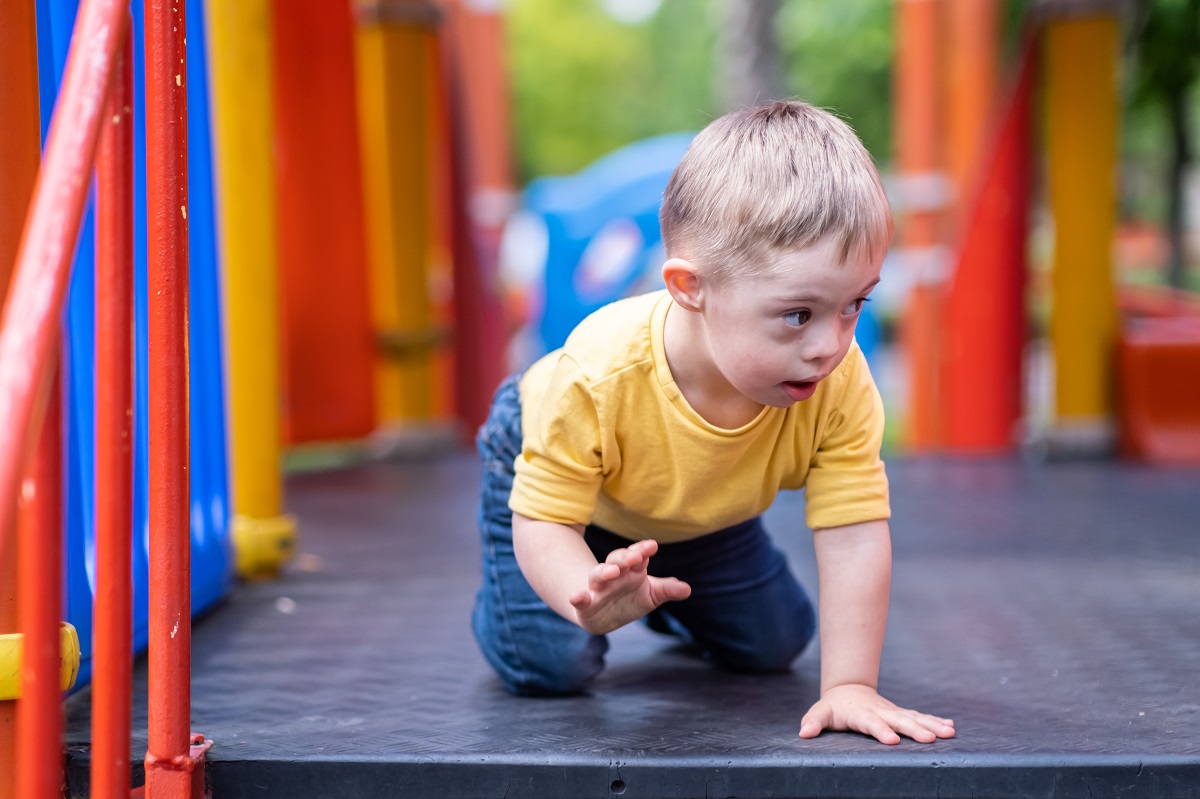
How can outdoor learning be made inclusive?
Outdoor play gives children more freedom and self-expression than the classroom. Teachers must make sure children feel comfortable with the activities and embrace new surroundings in the outside world. For some children, this kind of free play may be an unfamiliar experience.
Making an outdoor learning environment safe and inclusive is about both the design of the physical space and how it’s used. To help make it inclusive, there should be consideration paid to how every child will get fulfilment, whatever their needs and abilities.
How to make sure an outdoor play area is inclusive:
Safe, open space: One of the most beneficial parts of outdoor play is allowing the children to run around, explore, and blow off steam. School can be challenging for children of all ages, and the freedom to run around and play in the fresh air supports their physical and mental well-being.
Universal design: Using the principles of universal design ensures a play area is accessible and usable by everyone, no matter their unique needs.
Play equipment: To include every child, try to cover different interests and abilities with the equipment on offer. Climbing and active play isn’t for everyone, so also include things like sensory panels and interactive elements.
Calm zones: Some children may need a break from sensory stimulation. Including a calm or quiet zone in your outdoor space enables them to take a break from activities while still enjoying the outdoors.
Accessible pathways and ramps: Make sure paths and ramps are wide and sloped, if needed, to accommodate wheelchairs and walkers. Walkways and paths are safer when covered with a non-slip surface and sheltered from the elements.
Safe floors: Use soft, impact-absorbing flooring like rubber or foam to make floors safe for every child to move about uninhibited.
Signage and communication: Use clear signage with symbols and pictures to help children and staff understand how to use equipment and navigate the space.
Sensory gardens: Create sensory gardens with plants that engage touch, smell, sight, and sound to provide a calming and peaceful environment.
Inclusive activities: Make sure the activities on offer are suited to all children, and present opportunities for alternative activities for children who may not be able to participate in everything or might need to have breaks.
Support and guidance: Some children may not be used to playing outdoors and may worry about getting dirty or feeling overwhelmed. Teachers and support staff should reassure children and provide extra care to make sure they feel safe and open to the experience.
What is an ideal outdoor learning environment?
An ideal outdoor environment is safe, secure, and has a range of surroundings to explore. This could include different surfaces, such as grass or sand. Space for play might include equipment such as tunnels and climbing frames, and natural space like trees, plants, and gardens.
Shelter is an important consideration, both from rain and sunshine. Having an enclosed or partially sheltered outdoor play area enables schools to plan outdoor lessons and play activities whatever the weather. Shade from the sun is critical when children are playing outdoors on summer days.
Every school is different, and what’s possible varies hugely depending on budget and the space available. While it might not be possible to include everything you want to in an outdoor play area, whatever you choose will enhance the learning experience of the children.
Things you could include in an outdoor play environment:
- Safe, soft flooring
- Bright colours and patterns
- Contrasting textures
- Nature and plants
- Inclusive play equipment
- Outdoor shelter
- Sun protection
- Sensory elements
- Calm zone
- Water and sand
- Vegetable garden
- Climbing equipment
- Space to run
- Places to write and draw
- Insect houses
- Equipment to ride
- Soft place to lie down
- Tables and seating

How can you support creative play in an outdoor learning area?
Giving children lots of ways to explore and express themselves supports creative play outdoors. This might be using chalks, or encouraging play with loose parts like blocks, sticks, or fabric. Activities like nature crafts and den building help children get creative with materials they don’t normally use.
The most important thing is to make children feel safe and comfortable. Many children take to adventuring outdoors with ease, but some may feel more apprehension. Tuning into the whole group and supporting those who might be feeling unsure helps get everyone involved.
What is an example of an inclusive learning environment?
Here at Canopies UK, we work with schools to improve their outdoor areas and create safe, sheltered areas that support outdoor play. What a school can achieve depends on the outdoor space and budget, which is why we always recommend a free site survey, to begin with.
Here are some UK schools that have designed inclusive outdoor spaces for play:
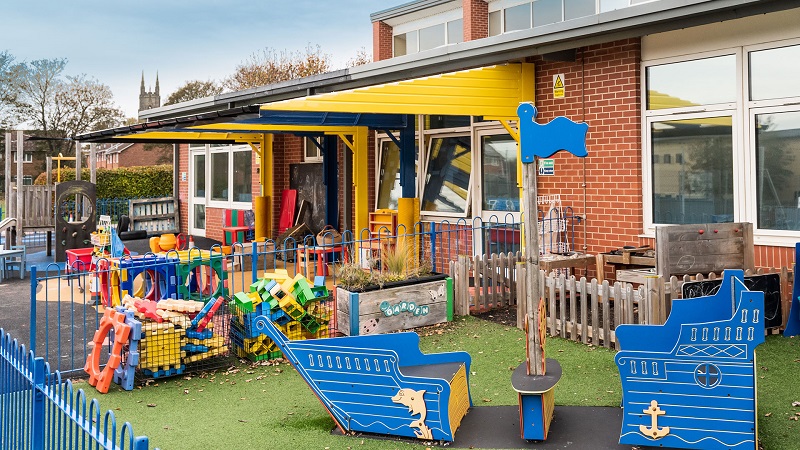
Bay Primary School
This primary school installed a colourful canopy that allows for continued outdoor play throughout the seasons. The play area includes a chalkboard wall, climbing cubes, a soft floor, and lots of exciting play equipment. The canopy protects from rain and sun, and is wall-mounted with no obstructing posts to allow children to run about freely underneath.
Grand Avenue Primary School
The school wanted a bold, colourful play area that would help the children make the most of their time outside during break and play times. The space features a castle room, alphabet letters for literacy games, outdoor seating and plenty of space to run around. The canopy allows play in every season, and was left free from supporting posts that would get in the way of children’s playtime.
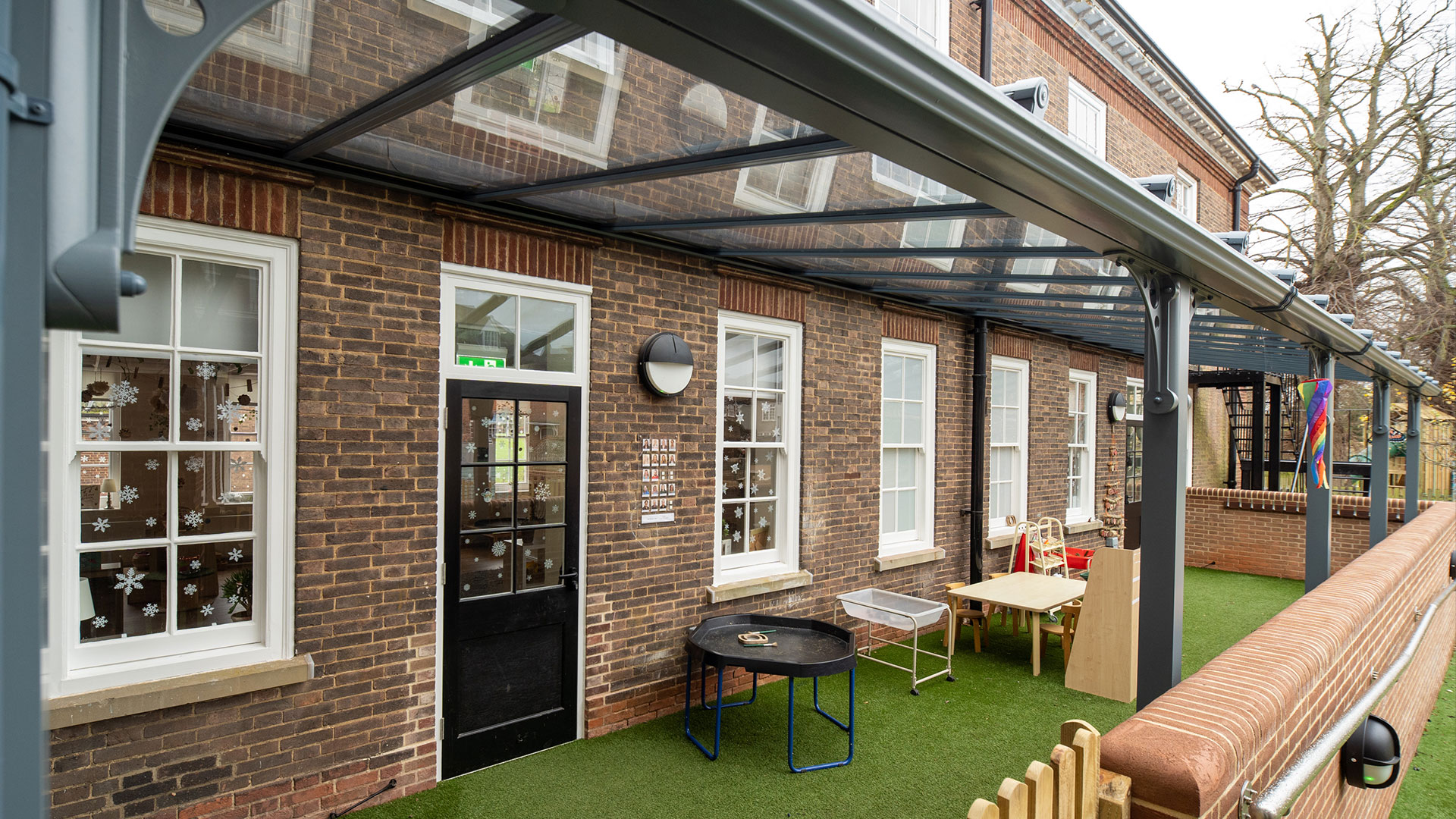
Gresham’s Nursery and Pre-Prep School
Gresham’s asked us to install a glass roof canopy over their newly developed play area. Featuring soft, faux grass, the new outdoor space makes use of a courtyard area for play in all weather conditions. There’s now sheltered space for activities including sand and water play. The play area is accessed by a wheelchair-accessible ramp from the outside.
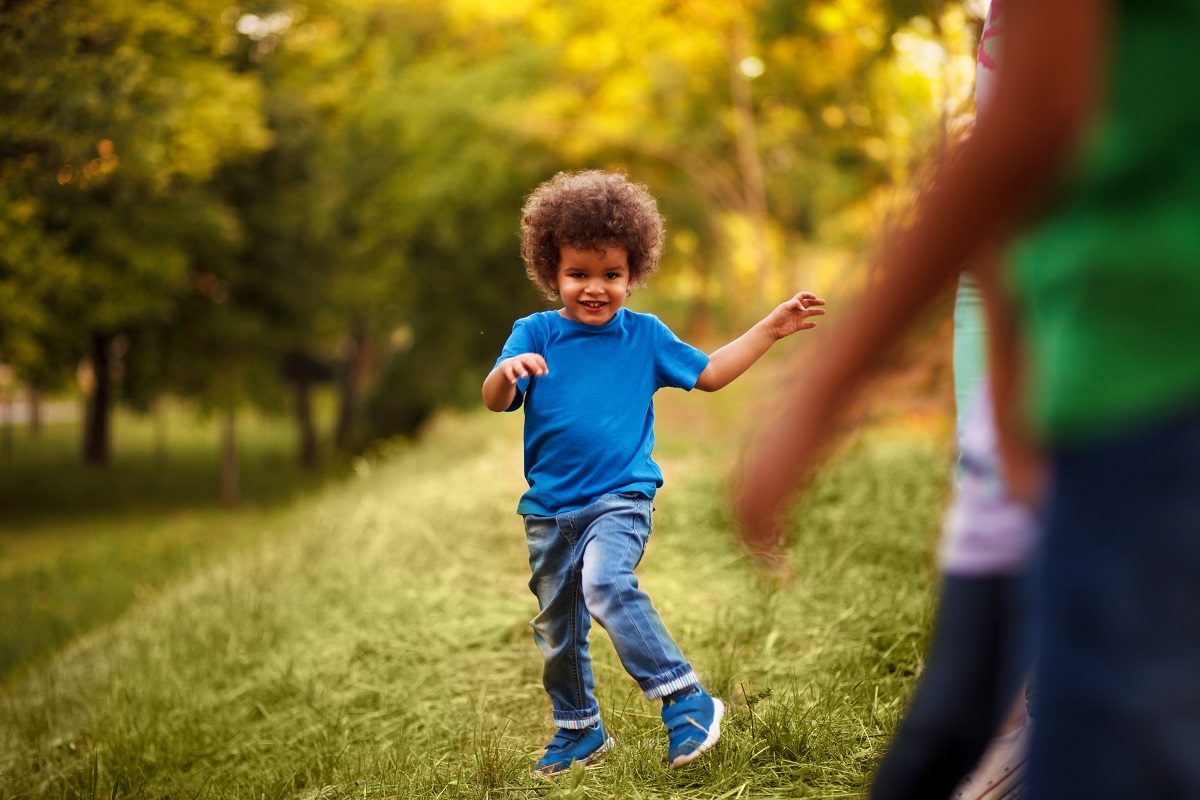
How do you plan for outdoor learning?
The first step is to make sure your space is set up safely and effectively for outdoor lessons. As detailed above, an ideal outdoor space should be safe, secure, and stimulating. It should be bright, engaging, colourful and filled with interesting sights, sounds, and textures to explore.
When planning for outdoor play, it’s worth considering a weather contingency plan. Should it rain, could your activities be easily moved into a classroom or hall? Would it be better to have an outdoor sheltered area you could plan to use come rain or shine?
Finally, having a selection of outdoor activities and lessons at hand makes planning for getting outdoors much easier. Why not take a look at our article ‘A Guide to Spring and Summer Outdoor Learning’ for some inspiration? Or download the free guide ‘Fun Ways to Incorporate the Outdoors.’
We hope this was helpful and provided some ideas on how schools can design inclusive outdoor spaces. If you want to find out more about our canopies for schools, take a look at the options here or get in touch for a chat.

